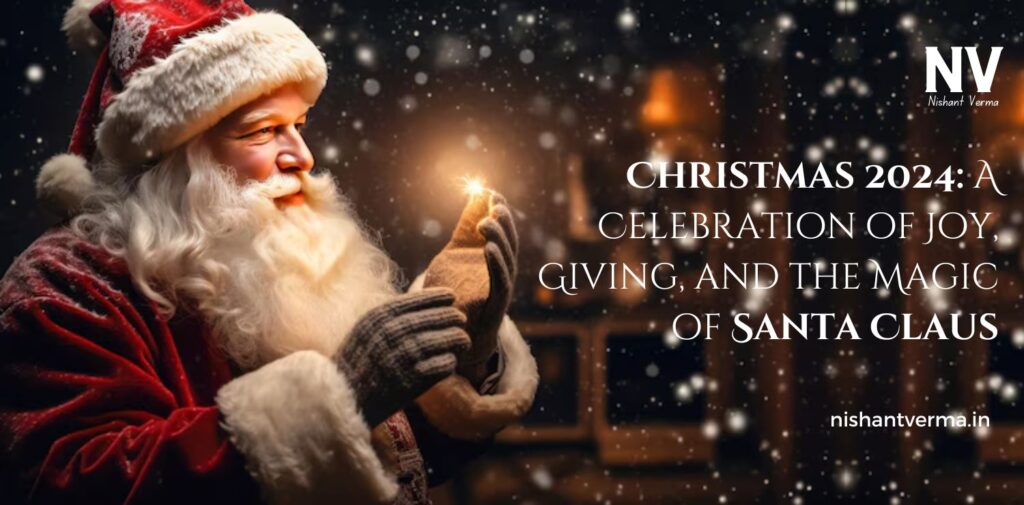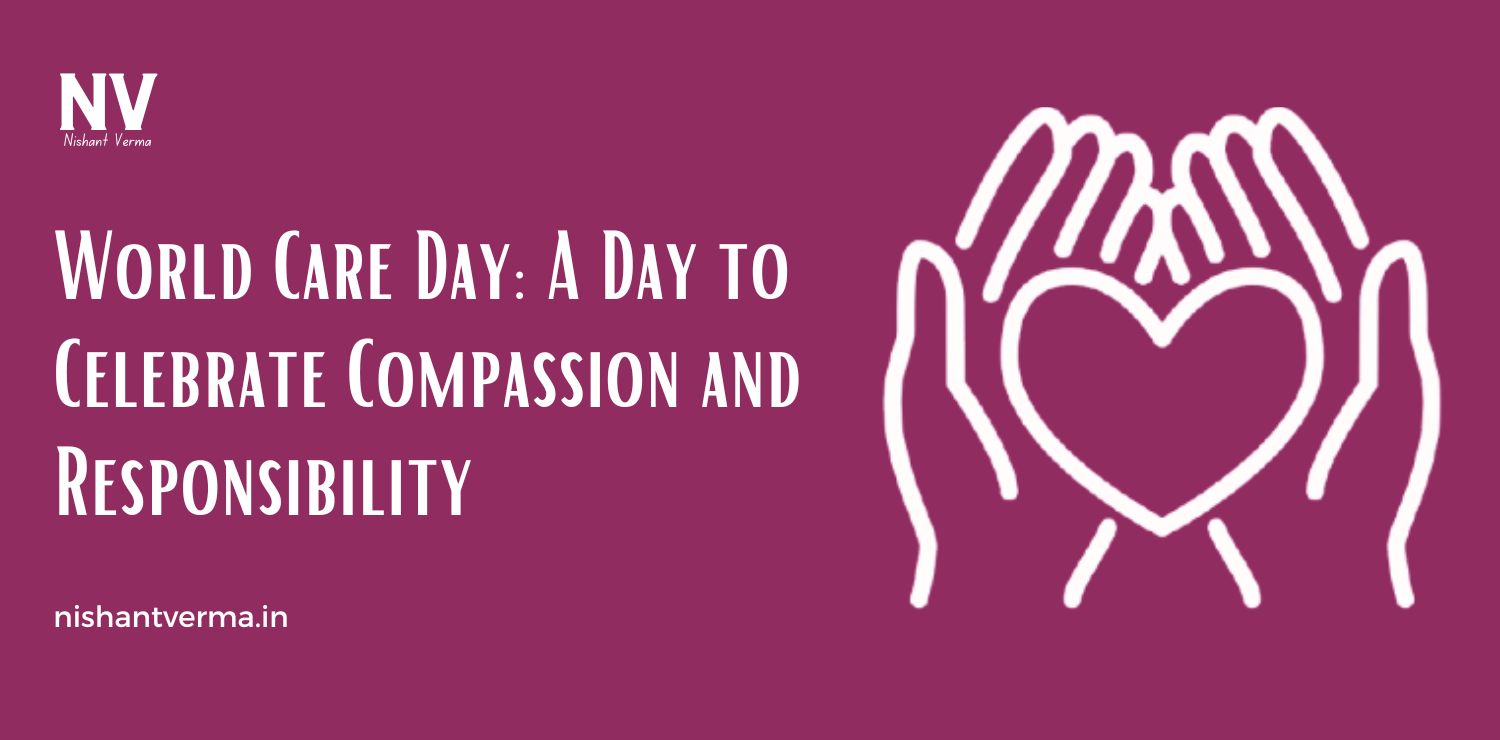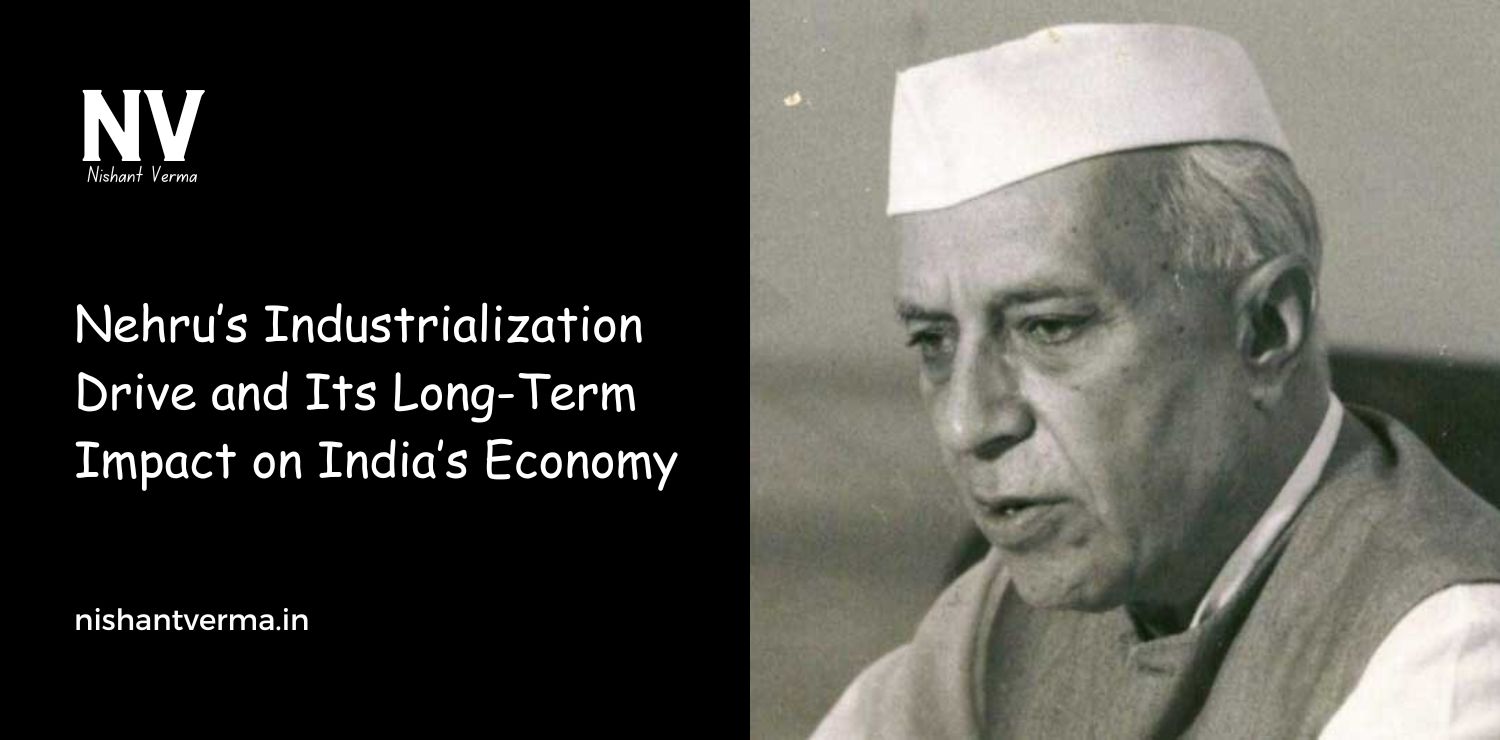Christmas is one of the most celebrated festivals around the world. Every year, on December 25th, people gather to celebrate the birth of Jesus Christ and share joy, love, and kindness with family, friends, and even strangers. The holiday season brings with it a sense of warmth, togetherness, and excitement. People decorate their homes, exchange gifts, enjoy festive food, and look forward to the magic of Christmas. Christmas 2024 promises to bring even more joy, as people across the globe celebrate this special day.
But Christmas is not just about the decorations and gifts. It holds deep religious, cultural, and historical significance. Along with the birth of Jesus Christ, the figure of Santa Claus plays an important role in spreading the holiday cheer. In this article, we will dive into the true meaning of Christmas, the traditions surrounding it, and the story of Santa Claus, who has become an inseparable part of this joyful celebration.
Origin of Christmas: A Religious and Historical Overview
Christmas is primarily a Christian festival that commemorates the birth of Jesus Christ, the Son of God, who was born over 2,000 years ago in Bethlehem. According to the Bible, Jesus’ birth was a miraculous event. His mother, Mary, was a young woman who was visited by the angel Gabriel and told that she would conceive a child by the Holy Spirit. Mary and her husband Joseph traveled to Bethlehem, where Jesus was born in a humble stable, as there was no room for them at the inn. The birth of Jesus is considered a symbol of hope, love, and peace for the world.
While Christmas is rooted in Christian faith, its celebration has evolved over the centuries, incorporating various cultural and secular traditions. For example, the custom of decorating Christmas trees, exchanging gifts, and singing carols became popular during the Victorian era in England. These traditions spread to many other parts of the world, including India, and have since become an integral part of the Christmas celebration, regardless of religious beliefs.
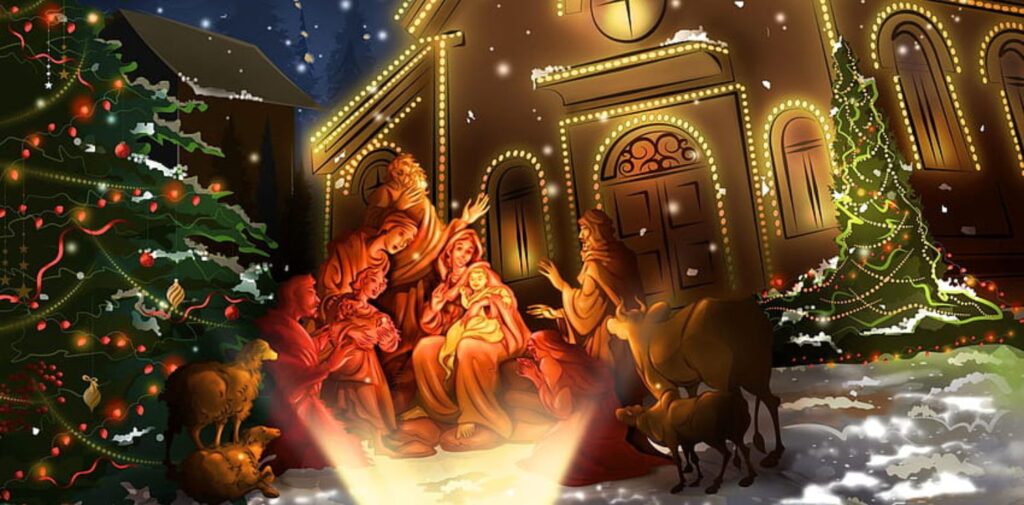
The Spiritual Meaning of Christmas
For Christians, Christmas is not just about gifts and celebrations; it is about the birth of a Savior. Jesus is believed to be the Son of God, sent to Earth to teach love, compassion, and forgiveness. Christmas serves as a reminder of the importance of kindness, generosity, and helping others in need. Christians celebrate this day by attending church services, singing hymns, and reading Bible passages that tell the story of Jesus’ birth.
One of the most important aspects of Christmas is the spirit of giving. The Bible teaches that it is better to give than to receive, and Christmas encourages people to share their blessings with others. Many Christians around the world donate to charity, volunteer in their communities, or help those who are less fortunate during this time of year.
The Christmas Tree: A Symbol of Joy and Hope
One of the most recognizable symbols of Christmas is the Christmas tree. This tradition has its roots in Europe and is said to have started in Germany in the 16th century. People began decorating trees with candles, which symbolized the light of Christ coming into the world. Over time, the tradition spread to other countries, and today, Christmas trees are decorated with lights, ornaments, and stars.
In India, the Christmas tree is also a popular decoration. Many families set up a tree in their homes, and even in public places, you can see beautifully decorated trees shining with lights. The Christmas tree represents hope, renewal, and the joy of the holiday season.
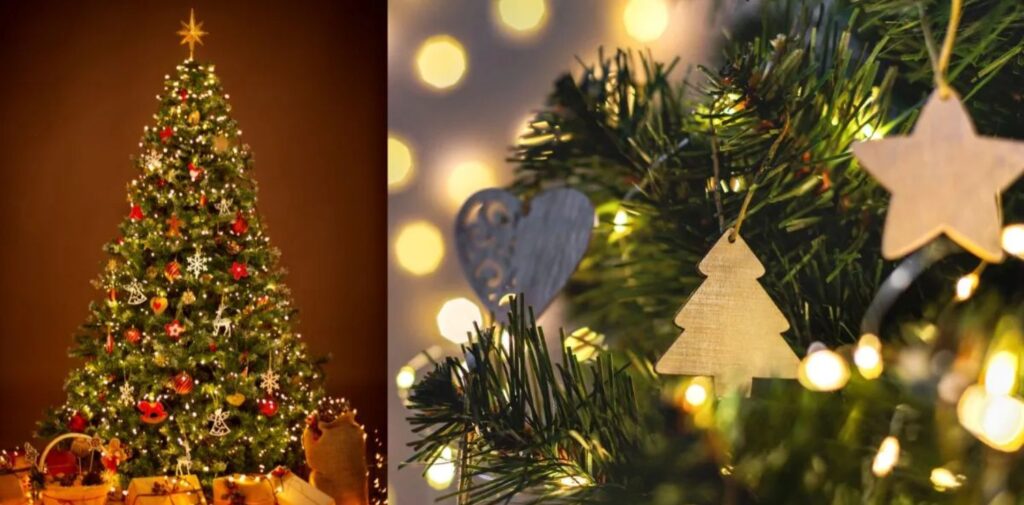
Christmas Traditions Around the World
Christmas is celebrated in many different ways around the world, with each country and culture adding its unique touch to the festivities. Here are some of the popular Christmas traditions from different parts of the world:
- In the United States and the United Kingdom, families decorate their homes with lights, wreaths, and stockings. On Christmas Eve, children hang stockings by the fireplace, hoping that Santa Claus will fill them with gifts. Christmas morning is often spent opening gifts, and a festive meal is shared with family and friends.
- In Mexico, Christmas celebrations begin with Las Posadas, a nine-day event leading up to Christmas Eve. People reenact Mary and Joseph’s search for a place to stay in Bethlehem. On Christmas Eve, families gather for a late-night feast, and fireworks light up the sky.
- In Italy, the Christmas season is marked by elaborate feasts, especially on Christmas Eve. It is traditional to have a meal with multiple courses, including fish and other special dishes. La Befana, an old woman who delivers gifts to children, is also a part of Italian Christmas folklore.
- In India, Christmas is celebrated with enthusiasm, especially in states like Goa, Kerala, and parts of Northeast India. People decorate their homes with stars and lights, and the midnight Mass is an important tradition. In some regions, Christmas celebrations last for several days, and the festive season is marked by caroling, feasts, and community gatherings.
- In the Philippines, Christmas is celebrated for the longest time, starting as early as September. The country is known for its grand Christmas displays, including the Parol (a star-shaped lantern) that symbolizes the star of Bethlehem. Christmas Eve is marked by a grand family dinner called Noche Buena.
The Magic of Santa Claus: Who is Santa?
No discussion of Christmas would be complete without mentioning Santa Claus, the jolly man in a red suit who is said to deliver presents to children all around the world. Santa Claus, also known as Saint Nicholas or Father Christmas, has become a central figure of Christmas celebrations, particularly in Western countries, but his influence has spread globally, including to India.
The Origins of Santa Claus
The story of Santa Claus dates back to the 4th century, to a Christian bishop named Saint Nicholas. Saint Nicholas was known for his generosity and kindness, particularly towards children and the poor. He was famous for secretly giving gifts to those in need, and this led to the legend of Santa Claus.
Over time, Saint Nicholas’ story evolved and blended with various folklore and traditions from different cultures. The modern image of Santa Claus, with his red suit, white beard, and round belly, was popularized in the 19th century, thanks to poems like “A Visit from St. Nicholas” (commonly known as “The Night Before Christmas”) and Coca-Cola’s Christmas advertising campaigns.

Santa’s Journey to India
In India, the figure of Santa Claus has become widely recognized, particularly among children. While Christmas has religious significance, the story of Santa Claus, with his sleigh, reindeer, and sack full of gifts, brings an element of fun and excitement to the holiday. Many Indian children eagerly await Santa’s visit, and families decorate their homes with images of Santa, reindeer, and Christmas trees. In schools and shopping malls, you may even see people dressed as Santa, handing out candy and gifts to children.
The Spirit of Christmas: Love, Peace, and Joy
Christmas is more than just a holiday; it is a time to reflect on the values of love, peace, and joy. Whether celebrated religiously or culturally, the message of Christmas resonates with people around the world. It is a time to be kind, to share with others, and to spread happiness.
In India, a country known for its diversity, Christmas brings together people of all religions and backgrounds. The celebration of love and goodwill is universal, and Christmas serves as a reminder of the importance of kindness, compassion, and unity in society.
Conclusion: Celebrating Christmas 2024
As Christmas 2024 approaches, people all over the world are preparing to celebrate the holiday with joy and warmth. From religious ceremonies to fun family traditions, Christmas offers a chance to come together, reflect on the year that has passed, and spread love to others. And with the magic of Santa Claus, the beauty of Christmas trees, and the spirit of giving, there is no better time to embrace the holiday season.
Whether you’re attending a church service, decorating a Christmas tree, exchanging gifts, or simply enjoying the company of loved ones, Christmas is a time to celebrate the values that bring us all together—love, kindness, and the joy of sharing. So, this Christmas, let’s remember the true meaning of the season and make it a time of peace, happiness, and togetherness for all.

